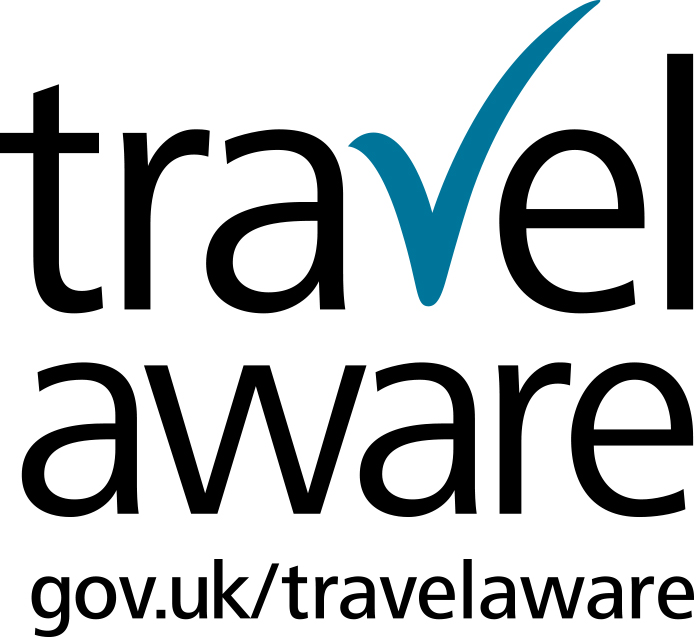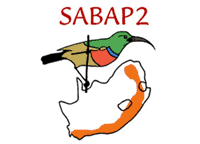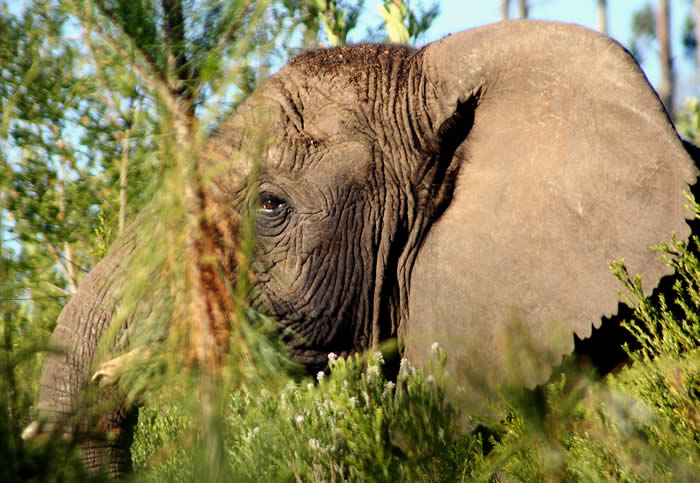South Africa’s Garden Route 25 January - 9 February 2020*
Plus big game in Mountain Zebra and Addo Elephant National Parks
The ‘Garden Route’: beautiful sweeping beaches and coastal wetlands on South Africa’s south coast. It’s the final destination of many migrating birds from Europe, where they mingle with African birds near whales and Cape fur seals by the shore.
The Addo Elephant National Park was set up to protect the last elephants and Cape buffalos in the southern part of South Africa. It now has all the mammals originally found here, plus some 200 bird species.



Stink horn fungus Aserae rubra, lesser striped swallow; Aristea confusa; red bishop (Rob May).
Together they make a superb combination of the best of South Africa’s wildlife, set in an easy to explore and malaria-free area.
The holiday will be based in three centres, six nights in the Garden Route just outside Plettenberg Bay, three nights in Mountain Zebra National Park and four nights at the Addo Elephant National Park. Two further nights will be spent on overnight flights from the UK to Port Elizabeth via Johannesburg and back.
Blue cranes
The Garden Route
Indigenous forests, a rugged coastline, wetlands, mountains, rivers and hidden coves hint at the range of wildlife to be enjoyed on the Garden Route.
The beautiful coastline of the Robberg Peninsula is a red sandstone promontory. Its rugged coastline with high cliffs is a favourite venue for naturalists. Southern right whales, dolphins, Cape fur seals and seabirds are seen from the cliff tops, while in among the coastal fynbos there are rock hyraxes and agama lizards. Archaeological digs are revealing interesting facts about the early inhabitants (700BC) of the peninsula.
Robberg peninsula
Nature reserves have mighty Outeniqua yellowwood trees, as well as milkwood and many other indigenous trees and plants, plus many forest birds. Diepwalle Forest has the last few remaining forest elephants, though the chance of seeing one of these great animals is slim. Birds include Narina trogon, African emerald cuckoo, green wood hoopoe and Knysna woodpecker. Above the forest towards the Spitskop Peak we will be out of the forest and into fynbos, a chance to do some botanising.
On a leisurely boat trip up the Keurbooms River we look out for kingfishers, fish eagles and darters, while the boat takes us into the forest. Much of the area is the Tsitsikamma National Park, where the indigenous forest and the Indian Ocean meet. Knysna turaco, Cape batis and chorister robin are three of many forest birds.
Mountain Zebra National Park
Set up in the 1930s when mountain zebras were down to single figures, there are now several hundred in a fenced national park that has been extended several times since its start.
Mountain Zebra National Park
Mountain zebras – now routinely exported to boost or establish populations elsewhere in South Africa – are the flagship species for protecting much more. ‘Game drives’ bring the chance of a range of mammals: those found in the park include lion, cheetah, caracal, Cape buffalo, black rhino, eland, the endangered black wildebeest, red hartebeest, gemsbok and grey rhebok.
Larger birds can include
blue crane, Verreaux’s eagle and Cape vulture. Smaller birds to look out for are Layard’s titbabbler, sickle-winged chat, Namaqua warbler, fairy flycatcher and pale-winged starling.
Cape mountain zebras
Addo Elephant National Park
The Addo Elephant National Park is renowned for its impressive herds of elephants, but with selective re-introductions now has the full spectrum of wildlife originally found in the area, including lion, black rhino, leopard and Cape buffalo, as well as spotted hyena, black-backed jackal, Burchell’s zebra, eland, red hartebeest, warthog and kudu. Smaller mammals may be sighted with a little patience, including yellow mongoose and meerkats.
Raptors include pale chanting goshawk and jackal buzzard, and grassland has Denham’s bustard, southern black korhaan, blue crane and secretary bird. Black-backed jackal, scrub hare and porcupine are best seen on a night drives, an optional extra, with luck along with owls, spotted thick-knees and nightjars. We take regular game drives within the park, but there is also a lot to see on foot around the accommodation.
A viewing deck and a ground level hide overlook an active water hole where, when floodlit at night, it attracts water dikkop (like a stone-curlew) as well as mammals. There can be lesser honeyguide in the trees and lesser striped swallows around the accommodation. Another hide overlooks a pond, which is good for black crake, southern red bishop and weavers.
The Zuurberg Mountains are home to some fascinating plants. The Zuurberg cycad Encephalartos longifolius and the Zuurberg hunchback Oldenburgia arbuscula are two to look for. In the arid lands of the Karoo, birds, mammals and reptiles have adapted to the harsh climate.

Karoo gold
Holiday details
Price: £4,900 per person in twin room for 13 nights plus two travelling days (Saturday to Sunday)
Single room supplement: £300
En suite facilities.
Flights: Scheduled flights, London to Port Elizabeth via Johannesburg, with South African Airways (SAA).
25/26 Jan: SAA 235/405 depart London Heathrow 18:05, arrive Johannesburg 07:15 on 26 Jan. Depart Johannesburg 10:55 arrive Port Elizabeth 12:30.
8/9 Feb: SAA 422/234 depart Port Elizabeth 16:20 arrive Johannesburg 17:55. Depart Johannesburg 20:55 arrive Heathrow 06:25 on 9 Feb.
Deposit: £500
Number: maximum 14
Accommodation in the Garden Route (6 nights): will be at Bitou River Lodge (Coral Tree Cottages has also been used on a previous visit). We then move to Mountain Zebra National Park (3 nights). In Addo Elephant NP (4 nights) we use the main rest camp at Addo or Zuurberg Mountain Village, a four star Lodge 15km from the entrance to the National Park.



Bokmakierie, Cape weaver, black-headed oriole (all by Rob May).
Main leader
 |
Geoff Crane is the man behind Crane's Cape Tours & Travel, both local leaders and ground agents for Honeyguide in South Africa. An experienced guide himself, he co-leads all Honeyguide’s holidays in South Africa. More about Crane's Cape Tours & Travel visit www.naturalhistorytours.co.za |
Conservation project
The second Southern African Bird Atlas Project (SABAP2) is one of the most intensive monitoring programmes ever undertaken in South Africa. Many areas are difficult to access but critically need atlas work and ongoing monitoring work for BirdLife South Africa to understand the bird conservation challenges in these remote sites. You can view a brief (eight slides) summary of year-by-year progress here.




















